Japan is a country that has long captured the imagination of people around the world. Whether it be its unique theatrical productions and exports or its intriguing social customs, the Land of the Rising Sun offers a wealth of cultural richness that continues to fascinate millions of tourists yearly.
Despite its small size, Japan has made a huge impact on the global stage, particularly in the fields of technology, fashion, and entertainment.
However, there is much more to Japanese culture than meets the eye. Beneath its intriguing exterior lies a complex and nuanced culture with a storied history and deep-rooted traditions that continue to shape the population’s way of life. Exploring Japanese culture is a journey that can be both fascinating and thought-provoking as we grapple with the contradictions of a society that persistently struggles with balancing tradition and modernity.
Over the following paragraphs, we’ll delve deeper into the many realms of Japanese culture, exploring its history, customs, and values and examining how they continue to shape contemporary society.
We will explore the unique features of Japanese art, cuisine, and entertainment and look at how they reflect the country’s cultural heritage.
We will also examine the role of religion, gender, and social norms in shaping Japanese culture and how these factors influence daily life.
Whether you are a long-time Japanophile or simply curious about the world, we hope this exploration of Japanese culture will be informative and thought-provoking.
Let’s dive in!
Historical Overview
Before we get into the inner workings of Japanese culture and understand what makes it so unique, analyzing the country’s history is essential to grasping its characteristics in the modern day.
Japan’s cultural evolution is a fascinating and complex topic, spanning thousands of years of history. From its prehistoric beginnings to its modern-day identity, Japan’s culture has been shaped by a blend of indigenous traditions, neighboring Asian influences, and global connections.
Prehistoric Japan (ca. 30,000 BCE–300 BCE)
The earliest known human presence in Japan dates back to around 30,000 BCE, during the Paleolithic era. By the Jomon period (ca. 14,000 BCE – 300 BCE), Japan was home to a highly sophisticated culture characterized by pottery making, hunting and gathering, ritualistic practices, and a simple lifestyle that saw people living in simple surface dwellings.
Yayoi Period (ca. 300 BCE–300 CE)
Throughout this time period, Japan’s culture was heavily influenced by Chinese and Korean folk immigrating to the Japanese islands. With the introduction of agriculture, iron tools, and the use of bronze, Japanese society underwent a massive change and allowed for a significant population expansion.
This era of Japanese history is also characterized by the emergence of new social classes, including warriors, farmers, and artisans, as well as the establishment of sedentary communities.
Kofun Period (ca. 300–710 CE)
During the Kofun period, Japan’s ruling elite became more centralized as the Yamato clan (who would go on to become Japan’s first imperial family) rose to power, and the emperor emerged as a political figurehead.
Around this time, the construction of large burial mounds for the elite – which is where the term kofun comes from – became a popular method of honoring the dead, which also cultivated major developments in pottery in the form of Haniwa.
Nara Period (710–794 CE)
Following the establishment of the imperial family’s rule over Japan, the introduction of Buddhism and Sinicization (a term referring to Non-Chinese regions coming under the influence of Chinese culture) profoundly impacted Japanese culture.
This influence could be especially appreciated after establishing a centralized government in the capital city of Nara, which was modeled after the Chinese T’ang dynasty’s (618-907) capital, Ch’ang-an.
Heian Period (794–1185 CE)
Considered the peak of the imperial court and a golden age of Japanese culture, the Heian period is widely regarded as a time of peace and prosperity, in which the arts truly began to flourish for the first time.
This era also saw the continued spread of Buddhism across the islands, with new schools, sects, and Buddhist temples popping up throughout the region.
Kamakura Period (1185–1333 CE)
The Kamakura period is known for a widescale political transformation, defined by the transition of power from the nobility to the military men in the provinces after the conclusion of the Genpei War and the establishment of the feudal system.
The shogunate, or military leader, emerged as the de facto ruler of Japan, and the highly stylized, aesthetic arts of the previous period saw a conceptual shift to a style that favored warrior tastes, which happened to coincide with the rise of the samurai class.
Muromachi Period (1336–1573 CE)
The Muromachi period is known as one of the darkest in Japan’s history, characterized by constant political disorder that brought upon bandits plaguing the countryside and unceasing rivalries between warlords.
Nonetheless, the nation managed to undergo significant cultural growth thanks to the influence of Zen Buddhism, as well as the introduction of now-famous customs such as tea ceremonies and the art of flower arrangement.
Edo Period (1603–1868 CE)
Following the war-torn period that preceded it, the Edo period was marked by a long period of peace and stability under the rule of the Tokugawa shogunate.
This period saw significant cultural developments, including the emergence of new forms of art and literature, a burgeoning economy, and strict social order.
Meiji Period (1868–1912 CE)
The Meiji period marked a time of significant modernization and westernization in Japan. The Land of the Rising Sun opened itself up to the world and underwent significant social and political changes, including the establishment of a constitutional monarchy, and also began to build a strong military force that managed to defeat China and Russia near and after the turn of the 19th century.
Taisho Period (1912–1926 CE)
In the middle of the globe’s first world war, Japan continued its rise on the international scene as a political superpower and meddling in foreign affairs westward. Inside its borders, the period saw the emergence of new cultural movements, including the avant-garde and modernist movements.
Fun fact: Netflix’s world-famous anime television show Demon Slayer happens to take place in the Taisho era.
Showa Period (1926–1989 CE)
The Showa period was marked by Japan’s militarization and its involvement in World War II.
After the war, Japan underwent a period of rapid economic growth and cultural transformation, including the emergence of new forms of pop culture (defined by the blossoming of Japanese cinema) and counterculture movements that dominated the 60s and 70s.
Heisei Period (1989–2019 CE)
Characterized by economic stagnation, devastating natural disasters, and social change deriving from political instability at the top, Japan saw fifteen prime ministers installed in the first dozen years of this time period.
Nonetheless, influential cultural exportations resumed, and the period also saw the rise of various technology corporations that are now responsible for producing much of the world’s electronics.
Reiwa Period (2019 – Present Day)
Today, Japan continues to evolve culturally in the Reiwa period, with a renewed emphasis on traditional values and a growing interest in sustainability and environmental awareness.
As Japan continues to navigate its place in a rapidly changing world, its rich cultural heritage remains a source of inspiration and pride.
Japan’s People at a Glance
At first glance, Japan may seem like one of the most socially and ethnically homogeneous nations in the world. This impression may be attributed to Japan’s rapid economic growth in the post-war period until the 1990s, which was accompanied by social solidarity and conformism.
Despite facing labor shortages since the 1960s, Japanese authorities avoided officially sanctioning foreign workers until the 1980s. Instead, they increased mechanization and expanded the female workforce.
Japanese workers have a history of traditionally identifying themselves with the company they work for, indicating subordination of the self to the goals of society. However, this may not be an accurate reflection of Japan’s social dynamics anymore.
In 2008, Nariaki Nakayama, a Japanese politician, resigned from his position after making a statement that Japan was “ethnically homogenous.”
This statement sparked criticism, as it neglected the existence of the Ryukyukan people in southern Okinawa and the Ainu people in the northern island of Hokkaido, who were colonized by Japan during the late 1800s. Nakayama’s assertion that Japan was a nation of “one people, one race” was deemed no longer politically correct.
The election of the first Ainu politician to the Japanese Diet in 1994 indicated that the Japanese government was interested in acknowledging the existence of diverse ethnic groups within Japan. Therefore, despite the apparent homogeneity of Japanese society, there is a growing recognition that Japan has a diverse ethnic population with unique cultures and histories.
Today’s Demographic Outlook
Japan’s true demographic makeup remains unclear due to the most recent census only allowing people to identify themselves by nationality and not ethnicity.
Although only a small number of foreigners are naturalized each year, immigration has been ongoing, both officially and unofficially, since Japan’s policy of isolation ended in the mid-eighteenth century.
In addition to foreign immigration, Japanese citizens and their descendants have freely moved across borders, resulting in an estimated 750,000 Japanese citizens with mixed heritage and 1.5 million permanent foreign residents in a population of around 126 million.
Despite the nationalist assertion that homogeneity equates to Japanese excellence, some “harufu” (Japanese people of mixed heritage) who have gained prominence in Japan – including the likes of Yu Darvish and Tsurunen Marutei – contest this notion.
Contrary to the impression that tourists might have, non-Japanese residents in Japan come from diverse ethnic backgrounds, including Korea, China, the Philippines, and Brazil, with the largest group being the latter. Although these populations have been brought in for factory and menial work under agreements since the 1990s, Japan has been reluctant to grant permanent residency.
Social Conventions and Customs
Japan’s social conventions and customs, some of them dating back centuries, are fascinating and complex aspects of its society. These traditions have shaped the way Japanese people interact with each other and the world around them. From the highly formalized tea ceremonies to the intricate bowing rituals, Japan’s customs are deeply rooted in its cultural and historical context.
Understanding these customs is crucial for anyone seeking to navigate Japan’s social landscape, whether as a visitor or a resident.
Thus, in this section, we’ll take a closer look into the intricacies of Japan’s cultural and social conventions and customs, exploring their origins, significance, and the ways in which they are adapting to a rapidly changing world.
Bowing
The most recognizable of these conventions, of course, is the bow. It’s used in a variety of situations, such as when saying hello, goodbye, thank you, or sorry.
While giving a little bow when meeting someone may be appropriate, it is not necessary to bow to everyone who bows to you. In shops or restaurants, staff members will bow and welcome customers with the phrase “irrashaimase,” a sign of respect to the customer.
As a customer, you will not be expected to bow back, but a casual head nod may be used as a sign of acknowledgment.
There are various forms of bowing, including the 45-degree saikeirei bow for a sincere apology or the highest level of respect, and the 30-degree keirei bow for showing respect to superiors. Visitors to Japan may find the eshaku 15-degree bow useful when meeting someone for the first time, but shaking hands is also a common practice.
Despite the variations in bowing styles, each has its own unique significance and cultural meaning in Japan.
Removing Footwear
The practice of removing shoes before entering a traditional Japanese establishment, such as a ryokan, temple, or even some restaurants, may seem perplexing to visitors. However, this custom is deeply ingrained in Japanese culture and reflects not only a desire to maintain cleanliness within living spaces but also a sign of respect.
Historically, Japanese homes featured tatami-mat flooring where people would sleep, sit and eat. To prevent dirt from being tracked onto these floors, it was customary to remove shoes before entering.
This practice continues today, with the act of removing shoes becoming a sign of respect when entering someone’s home or other traditional spaces.
As a visitor to Japan, it’s important to be aware of this custom, particularly when entering a traditional ryokan or temple. The genkan, or entrance hall, will typically be on a slightly elevated level, and you may see signs or designated areas for removing and storing shoes.
While some Japanese individuals may glide in and out of their shoes with ease, it’s perfectly acceptable for visitors to take their time and adjust to this new cultural practice.
Tea Ceremonies
The Japanese tea ceremony, or chanoyu, is a cultural practice that has been revered for centuries and represents the elegance, harmony, and simplicity that is characteristic of Japanese culture.
This ritual, which centers around the preparation and presentation of matcha green tea (no, not the kind of matcha you can buy in your local coffee shop), is much more than just a beverage. It is a way of life that has become an integral part of Japanese heritage.
Tea ceremonies can be traced back to the 9th century, right around when Chinese tea culture was introduced to Japan – it’s an import that further highlights the Sinicization that gripped the nation ever since the Nara period.
Over time, Japanese tea masters developed their own unique style, known as Chado, which emphasizes the principles of Zen Buddhism and respect for nature. Today, the tea ceremony continues to be a popular cultural practice, with many Japanese people learning the art of Chado from an early age.
The tea ceremony is not just about the tea itself but rather the entire experience, from the preparation to the presentation to the atmosphere in which it is enjoyed. Every aspect of the ceremony is carefully choreographed and imbued with meaning, from the choice of tea bowl to the placement of the utensils. The goal is to create a serene, harmonious environment in which guests can be fully present and appreciate the moment.
Japan’s Religious Profile
Religion in Japan is a unique blend of Shintoism and Buddhism that vastly differs from the Western approach to religion.
In contrast to in certain regions in Europe and the Americas, religion is not typically preached or based on a strict set of rules in Japan; rather, it is a set of moral guidelines that inform the way people live their lives and are deeply intertwined with Japanese cultural and social values.
One of the defining characteristics of Japanese religion is that it is a private and family-oriented affair, distinct from the state. There are no religious prayers or symbols at official events such as school graduations; religion is not frequently discussed in everyday life, and many Japanese individuals do not regularly worship or consider themselves to be religious.
Despite this, religious rituals play an important role in significant life events, such as birth, marriage, and death. Moreover, Japanese people participate in various spiritual matsuri, or festivals, throughout the year. These events are marked by vibrant displays of traditional dress, music, dance, and food, and serve as an opportunity for individuals to reconnect with their spiritual heritage.
With this religious context in mind, let’s explore the cultural impact of the two most practiced religions in the Land of the Rising Sun.
Shinto
The most practiced religion in Japan (practiced by 69% of its population), Shinto is a unique Japanese religion that dates back over a thousand years and continues to be an integral facet of Japanese culture today.
At its core, Shinto is a belief in the sacredness of the natural world and the inherent divinity of all things, with its teachings emphasizing the importance of harmony with nature, the value of ritual, and the power of spiritual purification.
One of the distinctive features of Shinto is its lack of a single founding text or prophet, which has allowed for a great deal of flexibility and diversity in its practice and interpretation over time. Shinto rituals vary widely between regions and communities and can involve anything from offerings of food and drink to the building of elaborate shrines and the performance of complex dances and music.
Despite its long history and enduring popularity in Japan, Shinto has faced its share of challenges in recent times. The religion has struggled to reconcile its traditional beliefs and practices with the modern world and has been the subject of criticism for its association with nationalist and imperialist movements during Japan’s militaristic era.
However, despite these challenges, Shinto remains a vital and vibrant force in Japanese culture. Its emphasis on the sacredness of the natural world and the importance of ritual and tradition continues to resonate with many Japanese people today, and it has played an important role in shaping the unique identity and cultural heritage of the Japanese people.
Buddhism
Buddhism has a long and complex history in Japan, spanning over a millennium and leaving an indelible mark on the country’s culture, art, and spirituality.
Despite its origins in India, Buddhism has evolved in unique and distinctive ways in Japan, adapting to local beliefs and customs to become an integral part of the country’s religious landscape.
One of the defining characteristics of Buddhism in Japan is its syncretism with other religious traditions, particularly Shintoism. This has resulted in a blending of Buddhist and Shinto beliefs and practices, with many Japanese people seamlessly integrating elements of both into their daily lives. This syncretic approach has also led to the creation of unique Buddhist sects and schools.
Buddhism has also been essential in shaping Japanese ethical values, as its teachings emphasize the importance of compassion, non-violence, and self-discipline, and have helped to shape Japanese ideas about social responsibility and personal accountability.
Japan’s Culinary Staples
Few cuisines in the world are as distinctive and varied as Japanese cuisine. Known for its delicate flavors, emphasis on fresh, seasonal ingredients, and meticulous presentation, Japanese food has amused the taste palettes of food lovers around the world.
From sushi and sashimi to tempura and ramen, Japanese cuisine offers a diverse range of dishes that are not only delicious but also deeply rooted in cultural traditions and practices.
You’d better have eaten something before this, because we’ll now explore the history and ingredients that make Japanese cuisine so unique and beloved, as well as their significance in Japanese culture and society. Hope your stomach doesn’t start rumbling!
Rice
Rice has been a dietary staple for the Japanese people for over two millennia, having even been used as a currency in the past. Harvesting rice is a strenuous and demanding task that Japanese individuals are taught from an early age. This reverence for rice is also reflected in the careful use and conservation of leftover rice.
Apart from the widely known sushi, there are a plethora of popular dishes that feature rice, such as donburi, onigiri, kayu, and mochi. These dishes represent a variety of cultural and culinary practices and reflect the versatility and adaptability of rice as a food.
Fish
Fish is an essential component of the Japanese diet, and the methods of preparing it are diverse and plentiful.
Japan’s cuisine offers a diverse range of fish dishes, such as grilled, deep-fried, and raw fish or sashimi. This appreciation for fish is evident in the vast amount of seafood that can be found in Tsukiji Fish Market, the world’s largest wholesale fish market.
For an early morning breakfast, one can indulge in some of the freshest, most world-class sushi you’ll probably ever try at Tsukiji. For those who prefer a more relaxed setting, there are many conveyor-belt sushi restaurants (kaiten zushi) located throughout Japan.
Local Foods
In Japan, the four distinct seasons are not only appreciated for their natural beauty but also for the variety they bring in the Japanese food culture. Supermarkets, hotels, inns, and restaurants frequently update their menus to feature the best seasonal offerings.
With such a diverse range of foods available, it’s not uncommon for many Japanese people to be unable to name all the different types of seaweed, mushrooms, and fish found in their local stores.
Kaiseki cuisine, which is a traditional multi-course meal, is an excellent illustration of how the food represents what is locally grown and in season. This culinary affair typically consists of up to twelve meticulously arranged courses of simmered, steamed, or grilled dishes, which can include sliced raw fish sashimi, rice, tempura, and soup.
Regional specialties, or meibutsu, are proudly served in many restaurants throughout Japan. One famous dish is okonomiyaki, a savory pancake popular in Hiroshima and Osaka.
For the ultimate okonomiyaki experience, a visit to Okonomimura (“okonomiyaki village”) in Hiroshima is a must, where watching the chefs prepare the dish is as enjoyable as tasting it.
Alcoholic Specialties
Japan has a storied drinking culture that involves certain rituals and traditions. One of the most important customs is never pouring a drink for yourself; instead, your friend or host should do this for you, and in turn, you should keep your companions’ glasses full. The term “kanpai” is commonly used to cheer before drinking in Japan.
Drinking in Japan is often accompanied by a meal or a light snack called “otsumami,” such as edamame, surume, or arare. While sake is the national drink of Japan, lager beer is the most popular drink. Popular beer brands include Kirin, Sapporo, Suntory, and Asahi, which are widely available and have an average alcohol content of 5% ABV.
However, it is important to beware of cheaper brands, which are not actual beer but rather happoshu, a malt-flavored beverage that avoids beer taxes due to its low malt content.
It’s suggested to drink the cheap sake hot, while the high-quality brands are best served chilled. During tough times when the cost is high, the term “nomihodai” (all you can drink) is worth remembering, and the best deals are found at izakayas or karaoke boxes.
Japan’s Famed Arts
Japan has a rich cultural heritage that encompasses a broad range of artistic forms. From ancient traditions that have been passed down for centuries to more contemporary expressions of creativity, Japanese art, film, theatre, and other forms of artistic expression continue to captivate and inspire artists, filmmakers, and playwrights all over the world.
With a long history of attention to detail and a deep reverence for nature and the natural world, the arts of Japan are renowned for their precision, beauty, and elegance.
We’ll do our best to briefly explore the fascinating world of Japanese arts, examining their history, evolution, influence on the global cultural landscape, and how these art forms are a staple of Japanese culture.
Manga and Anime
Manga and anime are two of the most popular forms of media in Japan. Manga refers to Japanese comic books and graphic novels, while anime refers to animated works, including TV shows and movies. These mediums have become an integral part of Japanese culture and have captivated audiences around the world for decades.
Manga and anime are known for their distinct and diverse art styles, often depicting exaggerated features and expressions. They cover a wide range of genres, including romance, science fiction, fantasy, and horror, and are enjoyed by audiences of all ages.
One of the most popular manga series is One Piece, which follows the adventures of a group of pirates led by the protagonist, Monkey D. Luffy. The series has been ongoing since 1997 and has sold over 480 million copies worldwide, making it the best-selling manga series of all time. It has also been adapted to television via anime, which is often the origin of most anime television series.
Anime has also produced numerous classics, such as the science-fiction epic Neon Genesis Evangelion, the legendary apocalypse tale Attack on Titan, the thrilling mystery classic Death Note, and the action-packed space western Cowboy Bebop. These works have not only gained a large following in Japan but also internationally, with many fans worldwide.
Theatre and Film
Japan has a rich and diverse culture when it comes to theatre and film.
The traditional forms of theatre, such as Noh, Kabuki, and Bunraku, continue to captivate audiences with their intricate costumes, mesmerizing movements, and powerful storytelling. On the other hand, the world of Japanese cinema has produced masterpieces that have left an indelible mark on the global cinematic landscape.
Noh, one of Japan’s oldest forms of theatre, is known for its minimalistic staging, mesmerizing chants, and slow movements. Kabuki, a form of theatre that emerged in the 17th century, is characterized by its colorful costumes, exaggerated movements, and spectacular stage effects. Bunraku, a form of puppet theatre, features intricately designed puppets that are operated by a team of puppeteers.
Japanese cinema has produced some of the most influential and critically acclaimed films in history. The works of directors like Akira Kurosawa, Yasujiro Ozu, and Hayao Miyazaki have garnered international acclaim for their unique storytelling, stunning cinematography, and innovative techniques.
Whether you’re a film purist or just someone who throws on the odd movie every once in a while, titles such as Seven Samurai, Harakiri, Spirited Away, Tokyo Story, and Late Spring are certainly worth checking out.
Geisha
Geisha, or geiko as they are known in Kyoto, are professional female entertainers who are trained in various traditional Japanese arts, including dance, music, and conversation. These skilled performers have long been a symbol of Japanese culture and refinement, and their role in society has evolved over the centuries.
Geisha first emerged in Japan during the 18th century as a group of women who entertained men with their talents, but they were not initially associated with the world of prostitution, as is sometimes mistakenly believed. Instead, they were highly respected and influential members of society who often entertained wealthy and powerful men at exclusive events and parties.
Today, geiko and maiko (apprentice geiko) continue to uphold the traditions and practices of the geisha world, providing their services to guests at tea houses and other exclusive venues in Kyoto and other parts of Japan.
Geiko are recognized almost globally as a cultural staple of Japan due to their elaborate hairstyles, beautiful kimonos, and skillful performances, which can include dancing, singing, playing musical instruments, and engaging in lively conversation with their clients.
Other Cultural Phenomenons
With a country that has so many cultural phenomenons, we just had to make a section that discussed some of the honorable mentions of the legendary, almost mythic components of Japanese culture. Let’s go over three of their most globally recognized national symbols.
Samurai
The samurai, one of Japan’s most iconic and intriguing cultural figures, played a significant role in shaping the country’s history and identity. Emerging in the 12th century, these highly skilled warriors were the embodiment of the code of bushido, a set of principles that emphasized loyalty, honor, and self-discipline.
The samurai class, along with the ruling shogunate, dominated Japan for nearly 700 years until the Meiji Restoration of 1868 marked the end of the samurai era.
Despite the end of the samurai class, their influence on Japanese culture and identity carries on to this day. Samurai continue to be a popular subject in film, anime, and Japanese literature, and their legacy can be seen in various aspects of modern Japanese society, from martial arts to business practices.
Origami
Origami, the Japanese art of paper folding, has captivated people around the world with its beauty, intricacy, and meditative qualities. It is a centuries-old tradition that reflects the ingenuity and creativity of Japanese culture.
Origami began as a form of religious expression in Japan, where paper was considered a sacred material. Over time, it evolved into a popular pastime enjoyed by people of all ages and backgrounds.
Today, origami is recognized as a form of art and has been used to create everything from delicate flowers to complex geometric shapes and even life-sized sculptures.
The beauty of origami lies not only in the final product but also in the process of folding itself, as the repetitive motions required to create each fold are said to have a meditative effect on the practitioner, promoting relaxation and focus. In this sense, some consider origami to be not just an art form, but a form of therapy as well.
Some notable origami artists include Akira Yoshizawa, who is considered the father of modern origami, and Satoshi Kamiya, who is known for his intricate and complex designs. However, anyone can try their hand at origami, regardless of their skill level. There are countless resources available online, whether it be simple tutorials to advanced diagrams, that make it easy for anyone to get started.
Cherry Blossoms
Cherry blossoms, or sakura in Japanese, hold a special place in the hearts of the Japanese people. Every year, from late March to early May, these delicate pink and white flowers bloom across the country, turning parks, streets, and mountainsides into a sea of pink petals.
For the Japanese, sakura symbolizes life’s transience, impermanence’s beauty, and the renewal of hope.
The history of cherry blossoms in Japan dates back to the 8th century when the Emperor Saga of the Heian period first held a hanami or flower viewing party. Since then, hanami has become a beloved tradition in Japan, where people gather with friends and family under the sakura trees to appreciate their beauty, drink sake, and enjoy traditional Japanese food.
In case you’re planning on visiting the country any time soon, while sakura can be found in many parts of Japan, some of the best places to experience hanami include Tokyo’s Ueno Park, Kyoto’s Maruyama Park, and Nara’s Mount Yoshino.
In addition to hanami, there are many other ways to enjoy cherry blossoms in Japan, such as visiting historical sites with sakura trees or taking a boat ride under a canopy of cherry blossoms. You won’t want to miss out!
Closing Thoughts
Japanese culture is a rich and fascinating tapestry of traditions, art, and customs that have captivated people worldwide for centuries. From the delicate beauty of cherry blossoms to the tasty cuisine that has been exported to restaurants and establishments across the globe, Japan’s unique cultural identity has left an ingrained mark on the world.
Whether you are drawn to the intricate art of origami or the modern Japanese culture qith immersive world of anime and manga, there is something for everyone to discover and appreciate in Japanese culture.
By embracing and celebrating this diverse and complex cultural heritage, we can continue to gain insight and inspiration from the beauty and wisdom of Japan’s rich cultural legacy.

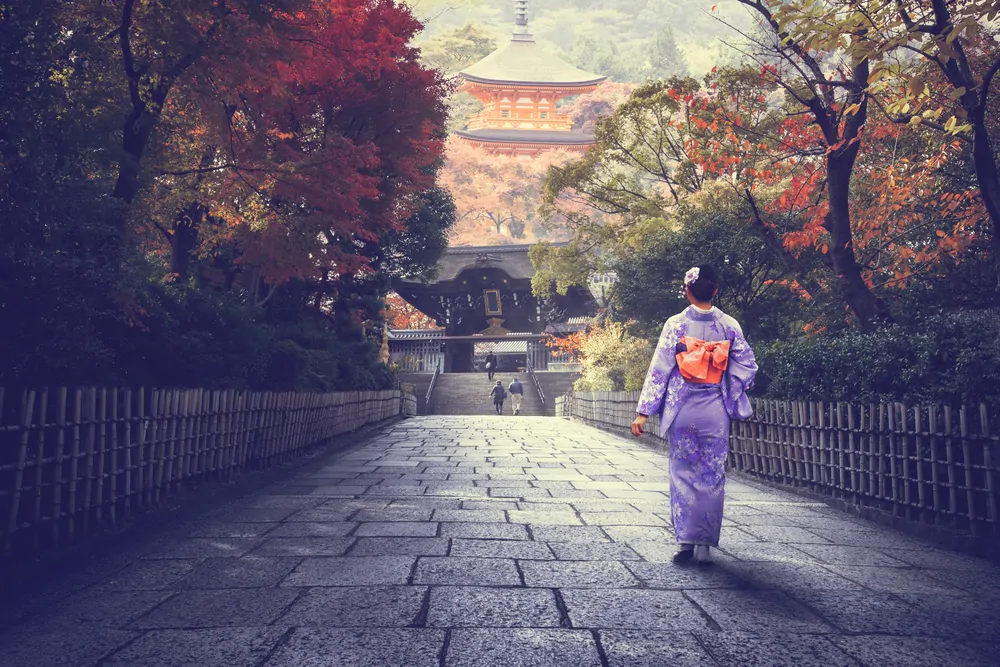

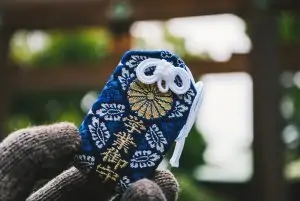
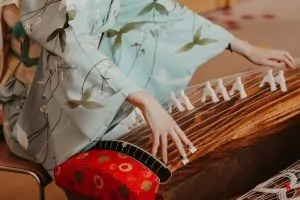
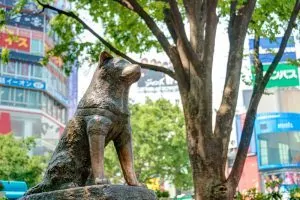
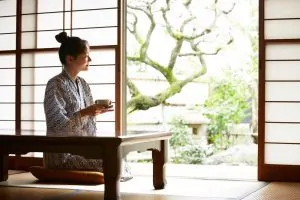
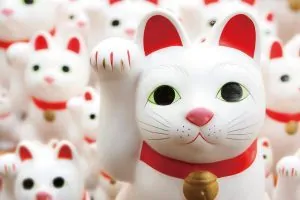
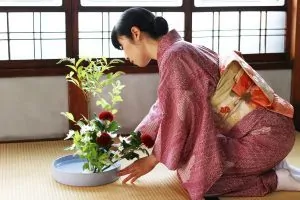

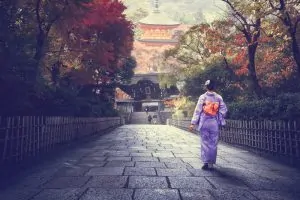
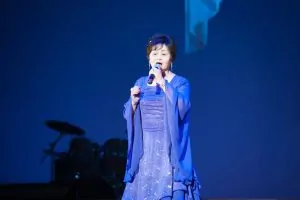

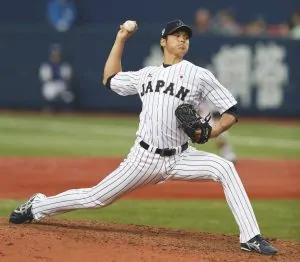




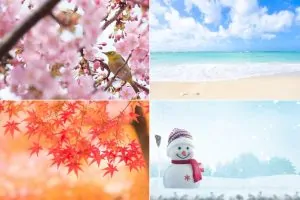

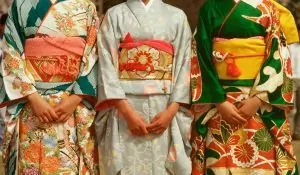
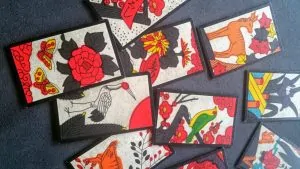
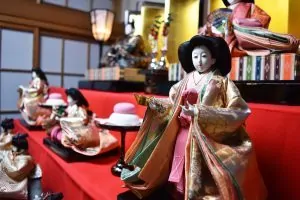
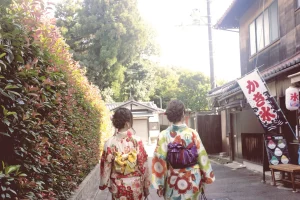







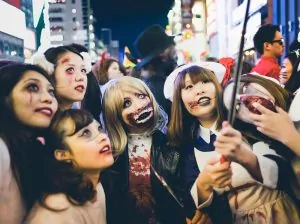



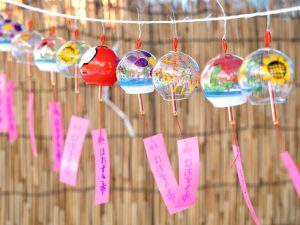

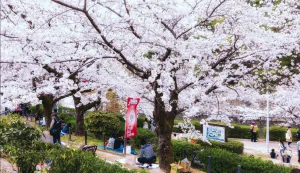



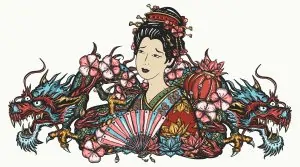
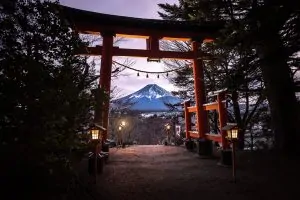
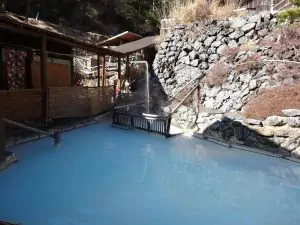
Leave a Comment